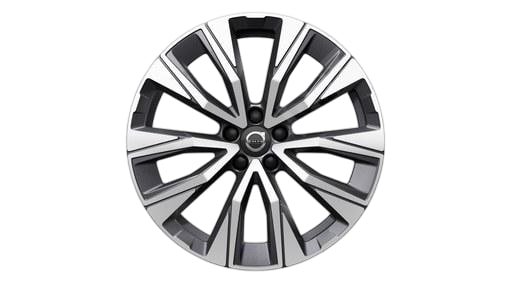Over time, even the most carefully driven car can show signs of wear and tear, especially when it comes to its wheels. Scuffed, corroded, or chipped alloy wheels not only affect the appearance of your vehicle but can also reduce its value and compromise performance. That’s where wheel refurbishment comes in—a cost-effective, environmentally friendly way to bring your wheels back to life without replacing them entirely.
What Is Wheel Refurbishment?
Wheel refurbishment is the process of repairing, restoring, and refinishing alloy wheels to their original or even better condition. Unlike wheel replacement, which involves buying brand-new wheels, refurbishment focuses on treating damage like kerb scuffs, corrosion, paint peeling, and minor structural imperfections. The process is suitable for most types of alloy wheels and is far more affordable than purchasing new ones.
Whether you’re dealing with curb damage, bubbling paint, or discoloration, wheel refurbishment is a smart solution for vehicle owners who care about aesthetics, safety, and value.
Why Choose Wheel Refurbishment?
There are several compelling reasons to choose refurbishment over replacement:
1. Cost Savings
Replacing a full set of alloy wheels can be a major expense. Refurbishment provides a much more affordable option while delivering a like-new finish. In most cases, refurbishment costs a fraction of what you’d spend on a new set.
2. Improved Vehicle Appearance
Wheels play a crucial role in the overall look of your vehicle. Scratched or oxidized rims can ruin the appearance of even the cleanest car. A professional refurbishment will restore the shine and color of your wheels, giving your car a fresher, cleaner look.
3. Increased Resale Value
If you’re planning to sell or trade in your car, having freshly refurbished wheels can enhance its resale value. Clean, damage-free wheels create a better first impression and indicate that the car has been well cared for.
4. Enhanced Performance
Damaged wheels can lead to poor balance, vibrations, and uneven tire wear. Refurbishment ensures your wheels are balanced and safe, improving the handling and driving experience.
5. Eco-Friendly Option
By refurbishing rather than replacing your wheels, you help reduce waste and conserve raw materials. It’s a more sustainable approach to vehicle maintenance that aligns with today’s growing emphasis on environmental responsibility.
Common Wheel Issues That Can Be Refurbished
Most cosmetic and some structural issues can be addressed with professional wheel refurbishment. These include:
- Curb Damage: Scrapes and scratches caused by hitting curbs.
- Corrosion: Common in older wheels, especially in damp or salty environments.
- Paint Flaking: Often caused by poor prior refurbishment or aging.
- Dents or Buckles: Minor distortions in the wheel can be repaired in some cases.
- Brake Dust Staining: Persistent stains from brake dust buildup.

Types of Wheel Refurbishment Techniques
The method used to refurbish your wheels depends on the level of damage and the type of finish. Here are the most common techniques:
1. Powder Coating
Powder coating involves stripping the old finish from the wheel, applying a dry powder paint, and baking it in a high-temperature oven to cure the new coating. This technique provides a durable and long-lasting finish with a wide range of color options.
2. Diamond Cutting
This method involves removing a thin layer from the wheel’s surface using a precision lathe. It’s ideal for wheels with a polished or shiny finish. Diamond cutting provides a distinctive, glossy appearance but may not be suitable for repeated refurbishments due to material removal.
3. Spray Painting
Spray painting is often used for minor touch-ups or budget refurbishments. It allows for color customization but may not be as long-lasting as powder coating or diamond cutting.
4. Shot Blasting
This process uses abrasive materials to clean and prepare the wheel’s surface before refinishing. It helps remove corrosion, old paint, and surface imperfections.
The Refurbishment Process: Step-by-Step
- Inspection: The wheel is checked for cracks, buckles, or hidden damage.
- Stripping: Old paint and coatings are removed.
- Cleaning and Sanding: The wheel is cleaned and sanded to prepare for refinishing.
- Repairing: Chips, dents, and scratches are filled or smoothed.
- Repainting or Coating: A new finish is applied using the chosen method.
- Curing or Polishing: The wheel is cured (for powder coating) or polished (for diamond cut).
- Balancing: The refurbished wheel is balanced to ensure optimal performance.
How Long Does Wheel Refurbishment Take?
In most cases, a full set of wheels can be refurbished in 1 to 2 days. Mobile services may also be available for minor cosmetic repairs, allowing for same-day turnarounds. The specific duration depends on the extent of the damage and the technique used.
Maintaining Refurbished Wheels
To keep your refurbished wheels looking their best:
- Clean regularly with pH-neutral wheel cleaners.
- Avoid harsh chemicals or acidic cleaners that can damage the finish.
- Wax periodically to protect against grime and brake dust.
- Drive cautiously to avoid curbing or pothole damage.
Conclusion
Wheel refurbishment is an excellent way to breathe new life into your vehicle’s wheels. Whether your rims are scratched, discolored, or simply showing signs of age, professional refurbishment can restore their appearance, improve safety, and save you money. It’s a smart investment that enhances both the function and aesthetics of your car.
If your wheels have deeper structural issues such as cracks or breaks, it may be time to consider more specialized services like wheel welding—an essential process for ensuring the integrity and safety of your wheels in more serious cases.












Leave a Reply